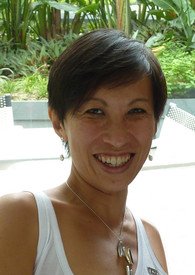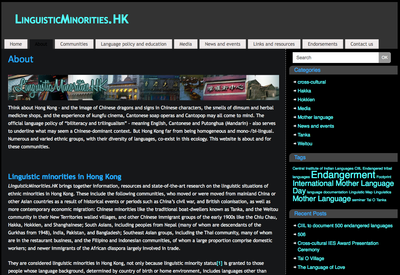The Many Languages of Hong Kong
To the casual observer, Hong Kong appears to be a Cantonese-speaking city with some English and Putonghua added in. But like major cities the world over, Hong Kong has attracted people from many different places. Beneath the homogeneous Cantonese front is a mosaic of languages and cultures, and now they are the focus of a website launched in the School of English.
To the casual observer, Hong Kong appears to be a Cantonese-speaking city with some English and Putonghua added in. But like major cities the world over, Hong Kong has attracted people from many different places. Beneath the homogeneous Cantonese front is a mosaic of languages and cultures, and now they are the focus of a website launched in the School of English.
The website, LinguisticMinorities.HK, is a project of Assistant Professor Dr Lisa Lim to recognise the richness of Hong Kong's linguistic environment and give a voice to those communities that are sidelined or whose language is in danger of dying out. Her initiative is in line with the increased attention to linguistic and cultural diversity, and language documentation and description as a scholarly enterprise, as well as the growing awareness of conservation in the Hong Kong community.
The website amasses information, resources and research on linguistic minorities, including the final-year projects of Language and Communication undergraduates who go into the field and interview speakers of minority languages. They have covered over a dozen communities so far - from Filipina domestic helpers to Hakka grandparents to African and South Asian families.
Some of the languages they focus on are dialects from China that are decreasingly being passed down to younger generations, such as Weitou, Hakka and Chiu Chau, or even in danger of dying out, such as Tanka, the language of boat-dwelling fishermen.
"We are trying to highlight the diversity of minorities in Hong Kong who are often overlooked," Dr Lim said.
"The Census and Statistics Department can provide data in broad brushstrokes on the proportion of minorities who speak selected languages, but we are on the ground, doing detailed research and scratching far below the surface to reveal everyday issues and challenges. People talk to us about their identities, why they prefer one language over another, their frustrations."
For example, South Asian children have very limited opportunities to study their native languages in local schools. This puts them at a disadvantage given the importance of mother-tongue learning, while Africans are often struggling due to limited support in learning Cantonese.
Feedback on the website has been very positive. The linguistic communities appreciate the interest in their language situation, the students, whose high quality of work inspired the website, find the experience gratifying and eye-opening, and journalists and other scholars have said the website plays an important role in showing the linguistic diversity of Hong Kong.
Dr Lim said she hoped the website, which is supported by the Knowledge Exchange Fund, could be further developed in future so the linguistic communities could become more involved "and have some ownership of the website".



